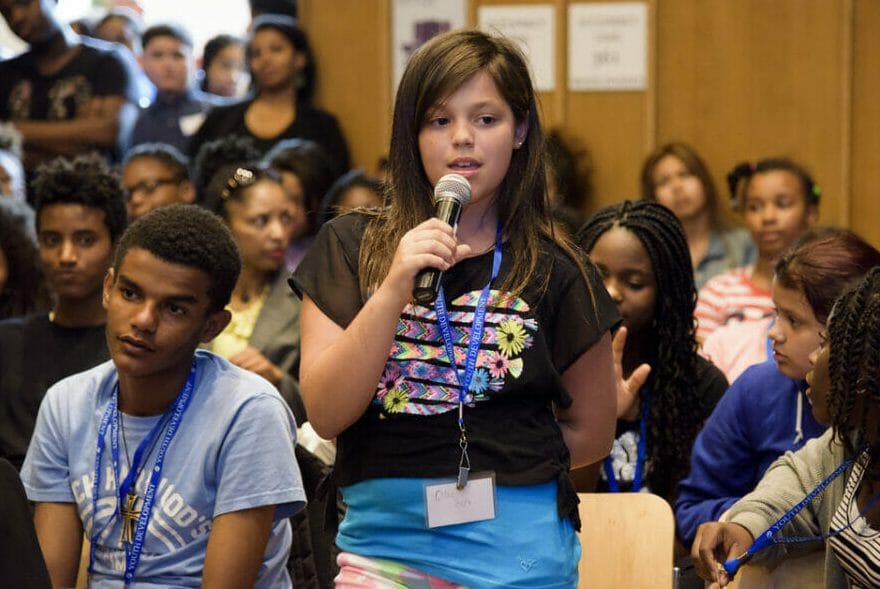
My mother always said, “Gal has never read Spock’s book. He’s just naturally wonderful”, and refused to discuss me and my performance any further. It helped that I ate very well, grew up nicely and that I was a friendly and polite child. Or maybe it was the other way around…
Let’s face it, parenting is scary business. When we have our first baby, we have no clue what to do half the time and we are desperate for signs of progress and indications that we are doing a good job as parents. So we read books, search the Net and ask around. What we get from that are average answers or rather answers about what the average is.
And this is a problem, folks. It is a problem because human beings are very complex biological creatures and not robots.
There is such a wide variety in nature that trying to figure out what it means for a little girl to be off the charts in terms of weight is risky business. Yes, she was really big as a baby, but now, Eden is healthy, quite short and has a very nice figure. All that baby fat is long gone.
If little Albert’s mother believed in averages, the world would have missed out on Einstein’s genius and enormous contribution to science and technology. Even when countless teachers told her they knew for certain the child would amount to no good, she insisted he was just different.

Say there are 12 boxes to be given away. 11 of them contain a single $1 coin. 1 of them contains a $949 iPad 2. The average value of these boxes is $96. However, if you get one of the 11 boxes, all you have is $1, whereas if you get the last box, you have a $949 iPad 2.
The point is that extreme values affect the average strongly and that an average (or “mean”) is neither a common value nor a real one. In the example above, nobody gets $96.
Say there are 9 women in a doctor’s waiting room. One of them is 9 months pregnant and the others are not. On average, they are 1 month pregnant, but what does that even mean? Similarly, my friend and I may have an average of 2.5 children between us, but neither of us has half a child, of course.
The point is that averages are sometimes just mathematical figures and have no meaning whatsoever in any practical situation.
When I worked at National Semiconductor’s headquarters in Santa Clara, CA, there was a sign on the wall of one of the corridors that said
Doing no more than the average is what brings the average down
If you think about it, each measurement affects the average, so if one of them drops, the average drops too. Of course, improvements also bring the average up, but in a company, there are employees who cannot perform better and those who can. The problem starts when the better performers just do as they are told or just meet the standard, because the other ones cannot change even if they wanted to.
Yet this is precisely what keeps happening in our world. Many commercial entities have a strong interest in targeting an average person, so average behavior is encouraged everywhere. We are surrounded by message that persuade us to follow trends, be like everyone else, be included, accepted and so on.
This makes things really boring, though. Wherever we go, we see the same things, hear the same things and buy products that do the same things and come in the same packages.
However, in order to drive more profits, those same things keep changing. So we hurry up and buy the new things to make life interesting, but then again so does everybody else. The result is a crazed, hyped, yet boring life.
Schools make this even worse by testing and measuring everything and administering state comparative tests, supposedly to make sure “no child is left behind”, but actually to increase conformity. The school system in many places is based on teaching – 30 very different students, single teacher, one teaching style – and expects to fit everyone inside some bell-shaped academic performance curve.

So here is what I suggest:
- Take a deep breath – exhale all the way to your abdomen and then inhale deeply
- Take another deep breath – this one will be deeper than the one before and help you relax. Are you relaxed?
- Make a list of areas in your life in which you try to conform. It may help to start with things about yourself that make you uncomfortable – your shape, your weight, your level of education, your hobbies, your religion, your choice of car or whatever. That discomfort comes from having an unrealistic expectation of yourself
- Take another deep breath – it can be unpleasant to recall this stuff, so it is good to calm yourself before you go on
- Add to your list areas in which you try to make you children conform. It may help to start with things they generally refuse to do when you ask or evade somehow – homework, housework, extra-curricular activities, kissing their aunt on the cheek and so on. That friction comes from them just trying to do what is natural for them and you expecting something else

- Go over your list(s) and ask yourself, “Who am I doing this for? Who am I trying to please here? Who says things need to be this way?”
- Now, ask yourself, “What will happen if I just do things naturally instead?” – allow your mind to create an image of that possibility. Remember, it is only in your mind and if you do not like anything, you can choose something different
- Write an alternative to each item on your list that you are willing to change
- Go over your list from time to time and see if you can change anything else
Feeling good about yourself will help you feel good about your kids and when you feel good about your whole family, you will be happy … no matter what the average is.
Happy times,
Gal












